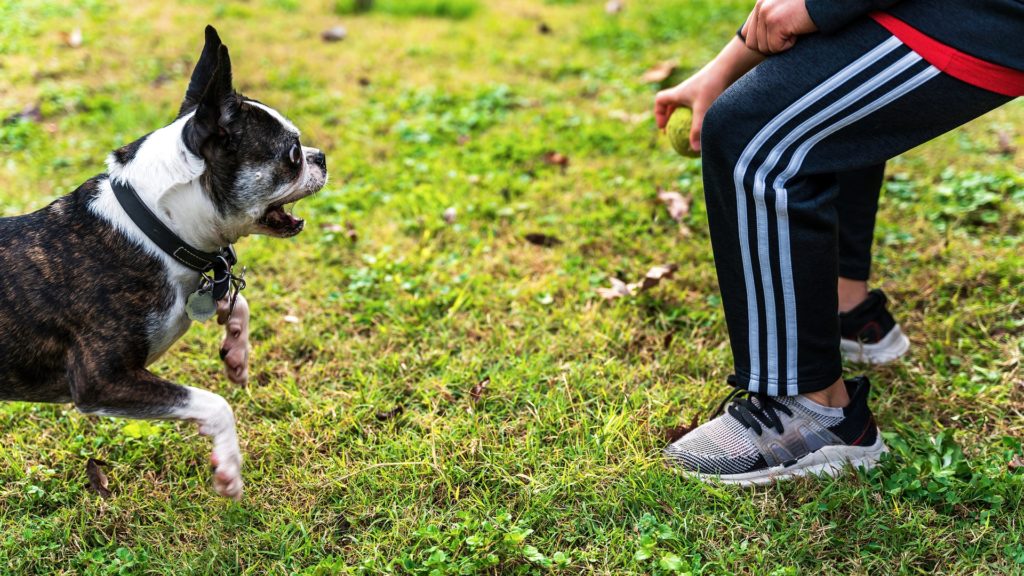If you’re constantly repeating commands to your dog, you’re wasting your breath.
Repeating dog commands is wasting your breath
Stop it. Repeating a word or phrase isn’t enhancing your dog’s understanding. We know someone who trained their dog in Klingon. The dog was perfectly trained – as long as you spoke to it in Klingon. You could say “Sit” all day long and the dog would only do it if and when it got tired of standing up. Say Ba! and the dog’s butt would hit the floor fast as lightning.
Stop wasting your breath
Dogs learn by the timing and placement of rewards. They learn words by you pairing the word with the action and reward. When your dog sits, you say “Sit!” as you hand over the reward. Because we humans tend to say more than we have to, we also say things like “That’s Sit!” “Good Sit” “I like that Sit!”
If you just say “Good Dog!” you’re not helping. Use the word that names the command – in this case “Sit!” Use it often. Use it whenever you see your dog doing whatever it is. Name everything in your dog’s environment, just like you would a human child. One of the reasons adults are constantly babbling to babies is to get them to recognize words before they’re able to use them. Babies can name things as soon as they understand language. Babies have heard words paired with actions or objects their whole lives.
Everybody does it
Every time we start a new beginner class we have to give the same lecture – say it once! If your dog is distracted, maybe a second time. That’s it! Dogs don’t deliberately ignore a command they understand. Either they don’t understand, or they didn’t hear it. And using your dog’s name doesn’t necessarily mean that they’ll pay attention either.
If you think your dog has a clear understanding of the word “Sit” try this experiment. Next time you’re out with your dog, hand a dog treat to a complete stranger and ask them to tell your dog to sit. They don’t have to touch the dog, and they have to be far enough away so the dog can’t jump on them. You hold the leash. And be quiet.
Did your dog do it? Most won’t. They don’t understand the word unless it’s in the “normal” context. Chances are, even if you’re a single-command convert, there’s a gesture you use, a position you’re in, or a motion you make that is part of the whole “Sit” routine.
Weekly vocabulary words

We once had a dog who preferred yellow balls to balls of any other color. They weren’t tennis balls, so we’re not sure why. But it was that dog (a Boston Terrier named Daemon) who showed us that dogs could thoroughly understand words. We could be anywhere in the house and say to Daemon “Go get your yellow ball.” He wouldn’t come back until he found that particular ball – even if there were blue and red balls all over the place.
A fun game to test the theory
If you’re skeptical, we understand. Most people don’t really think dogs can truly understand actual words. Here’s another experiment for you to try. Pick any toy that is “medium” interest level for your dog. Give it a unique name. Spend a minute playing with your dog with that toy, saying the toy’s unique name many times as you play. We’ll call it “Monkey.” “What a sturdy monkey toy!” “Do you love your monkey?” “Go get your monkey!” “Cute monkey!”
Do this once a day. Then, at the end of a week, leave that toy in another room and tell your dog to find Monkey. You’ll be amazed.
